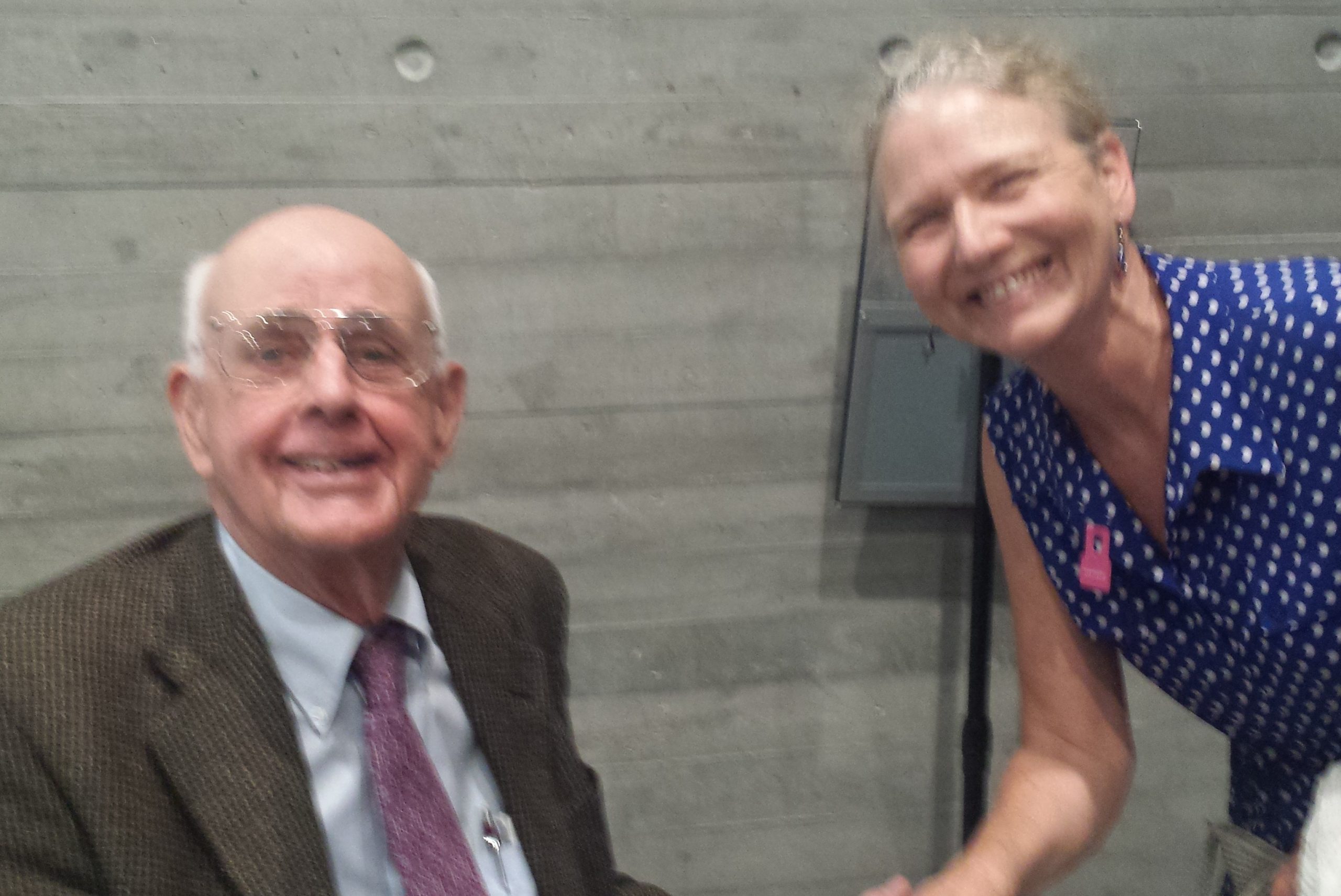I officially canceled my Netflix account. They have a gimmick: I quit in August, was charged anyway, received a refund –and then I checked my bank account and noticed that I had been charged for September. I canceled again; this time, instead of the refund, I received a message in my email inbox: “Your account will be canceled on October 3rd; in the meantime, you are free to watch unlimited Netflix for the month of September.” So, I tried. I found two movies (and they were not new releases) that I thought worth watching. And then, I ended up going back to watching “Grace and Frankie” again—for the 5th or 6th time. But this time, I couldn’t get through a single episode before clicking it off and closing the computer for the night.
This is an old saying, and I know it to be true: “A habit of behavior does not change until the pain of continuing that behavior is greater than the pain of ending it.” I know that it is time to end my Netflix habit.
When I spend literally hours scrolling through the menu of every type of series, documentary, and film before finally settling on something that’s “at least watchable”? And then, more likely than not, the film or series is not at all what I thought it would be; so I click it off and begin the search again.
There are so many better ways to spend an evening alone. Sometimes I follow along for a session of You Tube yoga, or practice guitar, or continue reading the book that’s been looking up at me from its place on the coffee table. Sometimes I get up from the couch and get busy with a creative project I’ve been making excuses for not finishing sooner. And sometimes, I decide to go to bed early.
But this habit of watching Netflix in the evenings is hard to kick, especially when they keep restarting my canceled membership, “Oops!” The other evening, I decided to give in and watch “Jobs,” the film about Steve Jobs and his long journey to establish his mark on the world. Since I just recently purchased a MacBook—my first Apple product, ever—I figured it would be educational to learn the history of my new machine. And the film was worth spending an evening glued to the screen.
To be fair to Netflix, I have been a faithful member since 2010. It certainly served a good purpose in keeping me informed and entertained during my years abroad as an English teacher in Costa Rica, China, and Mexico. In the evenings, after a long day of unfamiliar languages and cultures, I have rewarded myself by eagerly clicking on the next episode in a long series, even memorizing the intro song. Netflix kept my finger on the pulse of contemporary American culture, as well as providing the intellectual stimulation of foreign and indie films. In other words, Netflix is not all bad.
But. But recently I have become hyper-sensitive to the effects of this passive entertainment, as I observe its content shifting to normalize things that should never become normal: A close-up gunshot in the back of the head, for example, while the victim is looking into a mirror. I am an adult, and this image gave me nightmares; what happens to the emotions and sensibilities of a teenager? And this movie, with its guns showing up in the middle part, was the one I thought would be less violent than the one before it, which I chose to click off during the very first scene.
The time I spend watching streaming entertainment is the time I am not spending on an activity that involves doing something productive. To be honest, Netflix is perfect for the typical adult who is too worn out from work in the evenings to do anything but watch something, anything, that distracts and entertains. But even when I give myself this excuse: “I’ve worked so hard today; I don’t need to do anything else,” I end up watching something for far too long, staying up later than I should, and not sleeping well because of an over-stimulated brain (and, what Science has told us is the very real effect of the Blue Screen).
Now for the story:
I have never owned a television. While growing up in my parents’ home, we kids were restricted from watching anything on TV that contained sex or violence. My mother declared this simple rule, which we were expected to follow and to enforce by tattle-tailing when necessary: “No Killing or Sex Scenes.”
The exception was “Bonanza,” which we tuned into as a family on Sunday evenings, after The Ed Sullivan Show and Walt Disney—that is, if we didn’t have school the next day. This was the beginning of the age of the home entertainment industry. A color television did not enter our family room until I was in fifth grade.
By the time I was seventeen, I despised advertising and walked out of the room whenever a commercial interrupted the program. My father was a smoker—who wouldn’t be tempted, watching beautiful women in slinky dresses, puffing away while singing the brand’s jingle? He eventually kicked the habit, but died at the age of 76 from COPD; my mother died at 89 of lung cancer, probably from all that secondary smoke. And me? Along with most of my friends, I experimented with smoking as an early teen; maybe because of subliminal messages, I wanted to look like that Winston lady, or marry the Marlboro man. The quote about breaking a habit is what helped me quit smoking early in my marriage, thankfully, before becoming pregnant.
How far we have come as a society! And I do not mean progress.
I have never owned a television as an adult. From the time I went off to college and was having too much fun to watch the dorm boob tube, to the time I married a man who would rather play his guitar than watch a movie, to the years of raising children without the distraction of vapid cartoons, I was never tempted to purchase a TV. (And my children have thanked us.) Televisions—along with every other consumer item—were evolving in ways we never could have imagined, ways to tempt folks into spending more and more time in front of the blue screen.
A niece who grew up calling my own parents Mom and Dad became a TV junkie from an early age. She chose to sit on our couch to watch Saturday morning cartoons and afternoon soap operas rather than go outside to play with us and the other kids in our neighborhood. For some reason, my parents permitted this; most likely because they were busy and didn’t notice. Or, because they couldn’t stop her. This television addiction, I truly believe, ruined her life. Or, it could have been just a symptom of what was wrong inside her head and heart: years later, it came out that her biological father, whom she had lived with on and off after her mother (my older sister) died, had been sexually abusing her on and off from an early age. Maybe, for her, watching TV was a way to escape that trauma. But it was not a therapist: Watching TV never made her life better, not one bit.
Public broadcasting, I admit, does provide programs with redeeming value. Children’s shows like “Sesame Street” and “Mr. Rogers’ Neighborhood,” at least, show children what normal social behavior looks like. This public programming combines education with entertainment for adults, too.
The point is, I have nothing at all against “moving pictures.” In fact, as an artist, I consider all media as art—including film (but not all film is art). I once took a semester course in Latin American Film Culture; I have incorporated works of film in critical essays about literature; and once argued, for a Graduate course in English, that film versions of books can indeed fit the description of a “second edition” of a work of literature (if there is as yet no second edition of the book).
Which is why I have been a Netflix subscriber: for its art pieces.
But I am concerned about what indiscriminate consumption of streaming media does to us.
I am not suggesting that we let conservatives censor what Hollywood makes and what people watch—that’s an old issue. The issue that concerns me involves everyone, on both sides of the aisle. And oddly, it’s the MAGA camp that seems to be most vulnerable. Streaming media, in my opinion, has become a surreptitious tool to brainwash the masses into accepting things as Normal that should never be accepted as normal.
The two rules my mother drilled into us as children, ironically, are still the issue: indiscriminate killing (which objectifies the victims), and the degrading sexual objectification of women. Streaming media is the servant of a system with the objective to control what we think, feel, do—and buy. Passive consumers are more easily controlled than active producers.
I really believe this: The blue screen has become the Big Brother we all think we’re smart enough to recognize and resist. Through its ubiquitous presence, we have been conditioned to believe that dehumanization is a normal way for human beings to behave toward one another.
During my senior year of high school, I took an elective course with the intriguing title, “Psychology in Literature,” taught by an elegant and eccentric elderly gentleman with the name of Mr. Postle. Mr. Postle commanded our respect through his own respect for us. He kept a distance from us without giving off the “snob” vibe. He told us that he did not own a car or a television; instead, he often took a bus to New York City in the evenings to see a film or a play, or to attend a concert. I would sometimes see him after school let out for the day, walking pleasantly down Ridgewood Avenue on his way to take the bus to New York City.
It was Mr. Postle who surprised all of us with his definition of “pornography.” According to Mr. Postle, the content of the media itself is not intrinsically pornographic; it is its effect on the audience that is pornographic. Watching a fire burn down a house could be considered pornographic, if it incited a bystander to go home and burn down his own house. (I admit, this sounds eerily familiar after the January 6th incident). Watching a film about the war in Viet Nam, with all the killing involved, won’t make viewers want to join the army; in fact, its effect is intended to be quite the opposite. But watching movies and shows in which guns and violence are used casually as a means of getting one’s way or resolving conflict normalizes gun violence. Watching violent media may not tempt every viewer to go out and buy a gun to use on irritating neighbors—because it’s legal and everyone else is doing it—but eventually, seeing enough gun violence will reduce viewers’ sense of natural outrage over the idea of someone killing and someone being killed by a gun. Police, for example. And teen party games of Dare or Russian Roulette. (I have a friend whose 17-year-old son was the unlucky one at his final party.)
Back to the Psychology in Literature class: Mr. Postle’s course objective was to instill critical thinking skills in teenagers before they went off into the wide world. We did not have a textbook; we had his lectures on various media: books, film, plays – and the occasional news story big enough to result in a Supreme Court ruling and an execution. We also kept a notebook, in which we were to write the summaries of the media we consumed over the semester as well as our class notes of his lectures. I do not remember how many summaries we were required to write, but I do remember that I wrote a summary of everything I watched or saw that semester, including my weekly viewing of the Monty Python show, because I liked to write.
Mr. Postle collected our notebooks the week before the exam, and handed them back to us in class on the day of the final exam. After returning all the notebooks, he announced that he was exempting three students from the exam. To my utter shock, I heard him call my name. Shock? I was not a very serious student; I didn’t always do my homework. Mr. Postle taught us to read and view media critically, not just as a passive observer but as an active participant, asking questions of the media, reading into the ‘facts.’ Mr. Postle’s personal lifestyle choices, as well as his definition of “pornographic,” were his ways of enlightening our teenage brains to the existence of choice: We don’t have to simply open our mouths and let some unknown producer of media pour its agenda down our throats, swallowing it whole with the eager hunger of baby birds. We need to chew, taste, and perhaps, spit it out.
Back to the choice to continue streaming media (Netflix) or not. It all started, for me, with my mother’s two rules: “No killing and no sex scenes.” This got my attention: What exactly am I watching? I am the one who can choose what I watch. I don’t have to do what everyone around us is doing, even if everyone else is doing it.
So, I’ve decided that I have given my good years and too much money to Netflix. It served its purpose in keeping me informed during the years of living and working abroad, and during evenings alone as a divorced empty-nester. But I am in a new season of life now, where the new seasons of Netflix shows no longer appeal to me. I still do not have a television—which is why I subscribed to Netflix for as long as I did.
I am an artist who believes that all forms of media can indeed be defined as art: “something which inspires and moves us to become better human beings, (which is, interestingly, the opposite of pornography, which tempts us to become worse than we are).
But more and more media, I believe, is pornography, which tempts us to become worse than we are, not better. Not all media is art, and I have the choice not to watch all of it. More and more of the offerings on Netflix, fascinating and binge-worthy as they are, do not inspire us to become better human beings. Some of the award-winning blockbuster series I have watched over the years seem to lead viewers down and down with the heroes to the point of no redemption. Is that how I choose to spend hours of my life, every day? Certainly, I can continue to watch streaming media. But certainly, also, there are so many better things to do with my life.
Like eccentric Mr. Postle, I can choose to not be defined by what everyone else calls the Norm. This “normal” does not start out as normal. What is normal usually begins as something most people do not think is okay; but which, through marketing tactics and repetition, gradually is accepted because it’s easier to accept than to continue to resist. And it’s not just the media that does this. It’s the absence of people in the room pointing out, “This is not okay!” Which is exactly what my siblings did for one another whenever one of us dared to change the TV channel: “I’m telling Mom!”
I remember another lesson I learned in school through reading The Lottery, by Shirley Jackson, about the normalizing of killing someone in the village every year. The Hunger Games comes to mind as an echo of this story. Mass shootings are another example of the way society gradually normalizes unacceptable behavior. At first, any shootings were considered horrific. But they didn’t stop; gradually, there were so many that now a mass shooting does not even get people’s attention unless it’s worse than “usual.” More and more people simply choose not to think about it. But we need to remember: objectifying people by killing and abusing them is never normal, no matter how many times we watch it happen on the blue screen.
Visual media, especially, conditions us to accept things as a society not by choice or agency, but by simply watching things until they change the way we think. What’s behind it? Is it the weapons industry? The auto industry? Fashion? Wine? Capitalist oligarchs? These agendas are embedded in the media itself: no more blatant suggestions for buying cigarettes, washing machines, and fancy vacations because we see them in every episode.
This does not mean I am never going to watch streaming media, ever again. But it does mean that I am going to be more selective about whom I pay, and for which products.
Right now, I am trying to find a healthier addiction. But I still haven’t figured out how to navigate the new MacBook, and I’m not sure I want to buy into the Apple TV programming just because it comes with the software. I would prefer PBS or BBC.
But wait a minute: I think the habit of watching streaming media is nearly out of my system now. Maybe it’s time to click off the blue screen and spend my evenings watching stars in the night sky.


